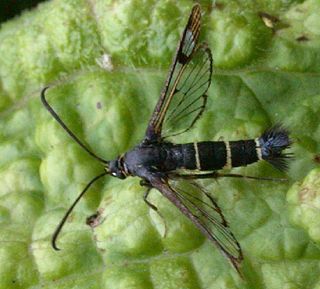
The Sesiidae or clearwing moths are a diurnal moth family in the order Lepidoptera known for their Batesian mimicry in both appearance and behaviour of various Hymenoptera.

The owl butterflies are species of the genus Caligo and are known for their huge eyespots, which resemble owls' eyes. They are found in the rainforests and secondary forests of Mexico, Central and South America.

William Chapman Hewitson was a British naturalist. A wealthy collector, Hewitson was particularly devoted to Coleoptera (beetles) and Lepidoptera and, also, to birds' nests and eggs. His collection of butterflies, collected by him as well as purchased from travellers throughout the world, was one of the largest and most important of his time. He contributed to and published many works on entomology and ornithology and was an accomplished scientific illustrator.

Colias is a genus of butterflies in the family Pieridae. They are often called clouded yellows in the Palearctic and sulphurs in North America. The closest living relative is the genus Zerene, which is sometimes included in Colias.

Miletus is a genus of butterflies sometimes called brownies. Its species are found in the eastern Palearctic realm and the Indomalayan realm, and some stray east of the Wallace Line. The genus was erected by Jacob Hübner around 1819. Miletus is the type genus of the subfamily Miletinae.

Doxocopa is a genus of Neotropical butterflies in the family Nymphalidae, subfamily Apaturinae. It includes the following species:
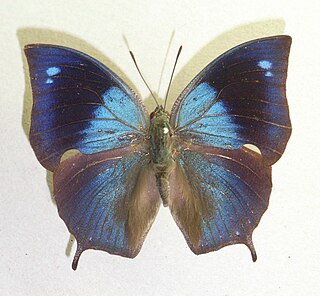
Memphis, described by Jacob Hübner in 1819, is a Neotropical nymphalid butterfly genus in the subfamily Charaxinae.

Caligo telamonius memnon, commonly known as the giant owl or pale owl, is a subspecies of butterfly of the family Nymphalidae. This subspecies can be found in rainforests and secondary forests from Mexico to the Amazon rainforest in South America.
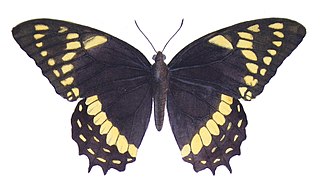
Papilio menatius is a butterfly of the family Papilionidae.

Argynnis is a genus of butterflies in the family Nymphalidae, one of several groups known as "fritillaries".
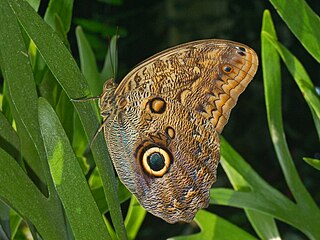
Caligo illioneus, the Illioneus giant owl, is an owl butterfly belonging to the nymphalid family, Morphinae subfamily, tribe Brassolini.

Papilio albinus is a species of swallowtail butterfly from the genus Papilio that is found in west Western New Guinea and Papua New Guinea. The species was first described by Alfred Russel Wallace in 1865.

Doxocopa laure, the silver emperor, is a species of butterfly of the family Nymphalidae.

Antirrhea is a Neotropical genus of butterflies from the family Nymphalidae.
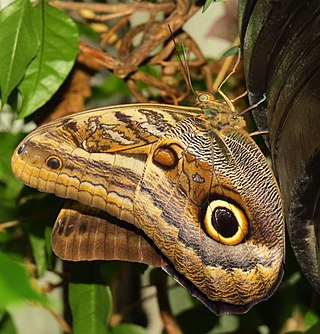
Caligo oileus, the Oileus giant owl, is a butterfly of the family Nymphalidae.

Caligo teucer, the Teucer owl butterfly is a butterfly of the family Nymphalidae. It was described by Carl Linnaeus his 1758 10th edition of Systema Naturae. It is found from Colombia and Venezuela to Bolivia and Paraguay. The habitat consists of rainforests and cloudforests at altitudes ranging from 400 to 1,400 meters.
















